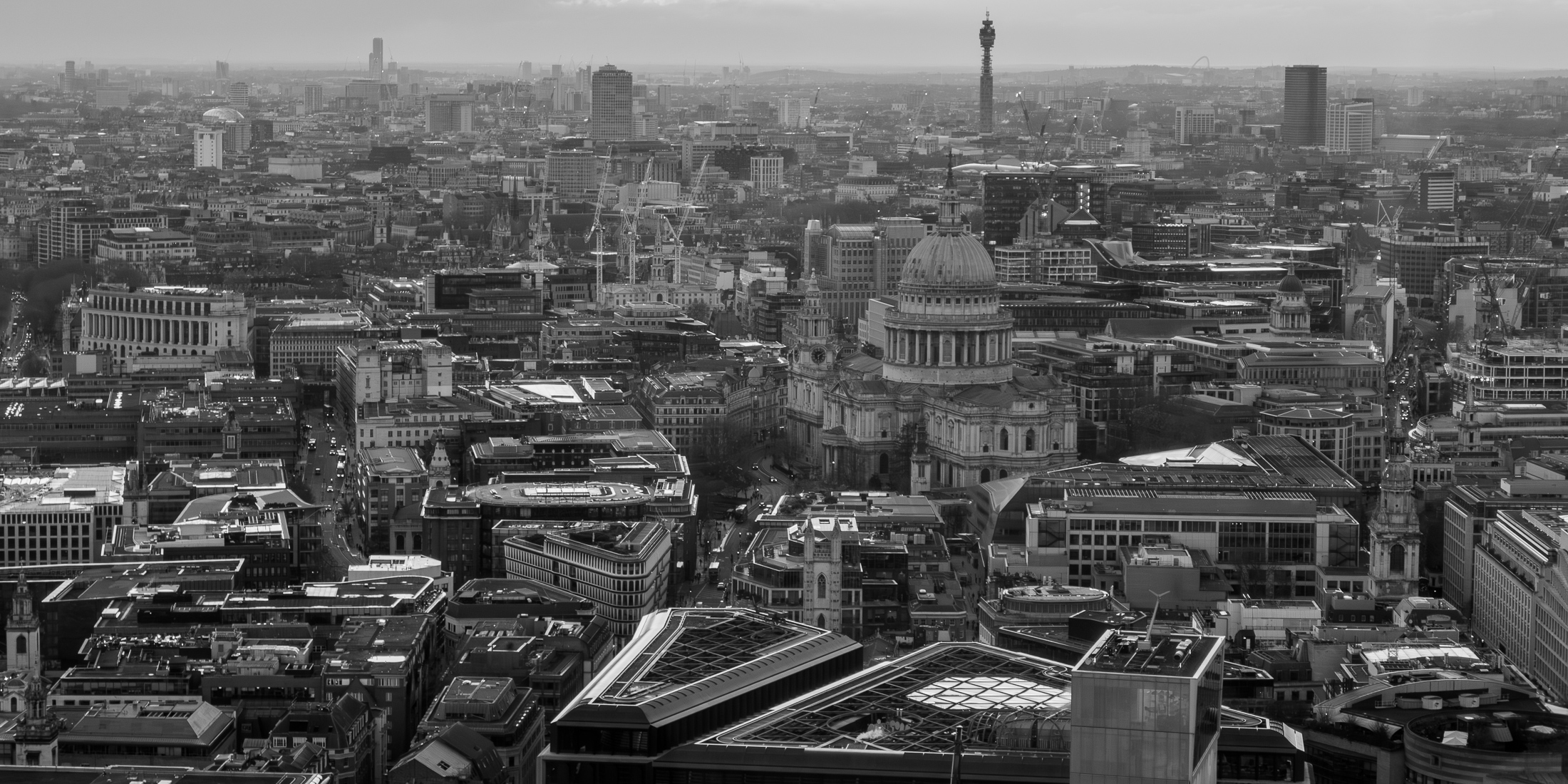Looking for yellow
After my first attempt to find some yellow a few weeks back, and before New Zealand, I managed to find a day to go out for another drive. I hadn’t shot any more photos on the Bronica or the Pentax Z-1 since last time.

I wasn’t far out of Canberra before I came across some nice fields of yellow and was able to pull over a take some photos with the Bronica.


I continue to be impressed with the Kodak AeroColor IV (Alien Aeronega). I am not sure if it is the basically clear base, but I also found it much easier to get the colours right with the scans. (Scanning the 120 film remains annoying, it is just so hard to keep it perfectly flat. I am onto my 3rd holder, surely this one will work 😒)
I don’t think the colours are wrong in the Kodak Vision3 photo above, the sun came out and the yellows were yellow, just took a while to get there, and mixing the white balance between the highlights and the shadows remains tricky.
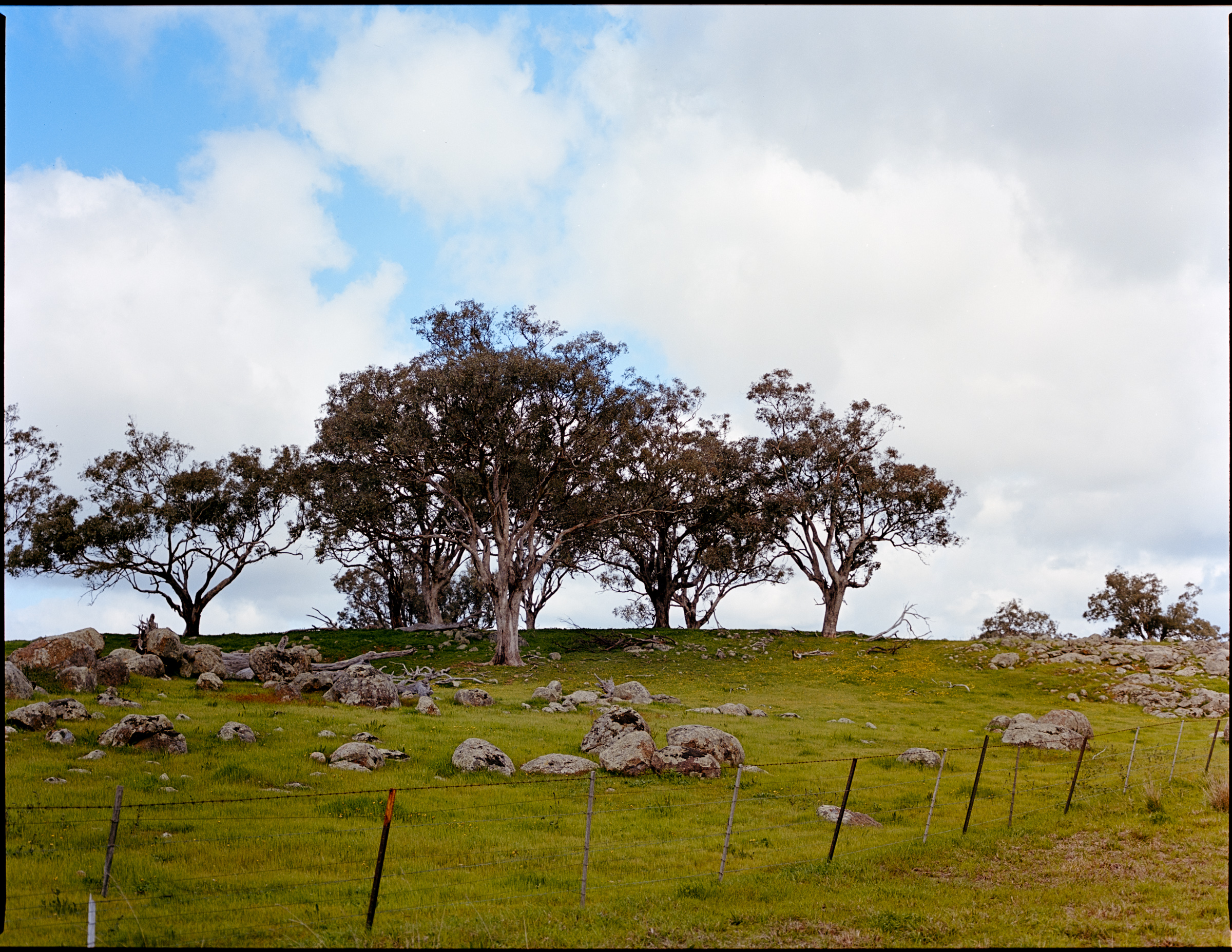
Instead of the black and white film in the Pentax Super Program I was testing a roll of Reflex Lab 320D AHU (the modern update the Kodak Vision3 from Kodak that doesn’t include the remjet layer meaning it can be more easily processed in C-41 chemicals).
My plan was to shoot half a roll rated at ISO320, open the camera in a dark bag and cut the film, putting half of it in a fill canister. This section of film would be processed in “traditional” C-41 chemicals. Then rate the rest of the roll at ISO250 to process in ECN-2 chemicals.

This was an entirely foolproof plan. Except when I went to open the camera in the dark bag I noticed that the film had not advanced at all 😒
This was entirely on me for failing to load the film correctly into the camera. It is supposed to be ‘easy’ to load, but I do find this camera particularly fiddly. I hadn’t lost any film, it had only repeatedly exposed the leader and never pulled more out of the cassette, but I also didn’t have any of the photos I thought I had taken up to that point 😅
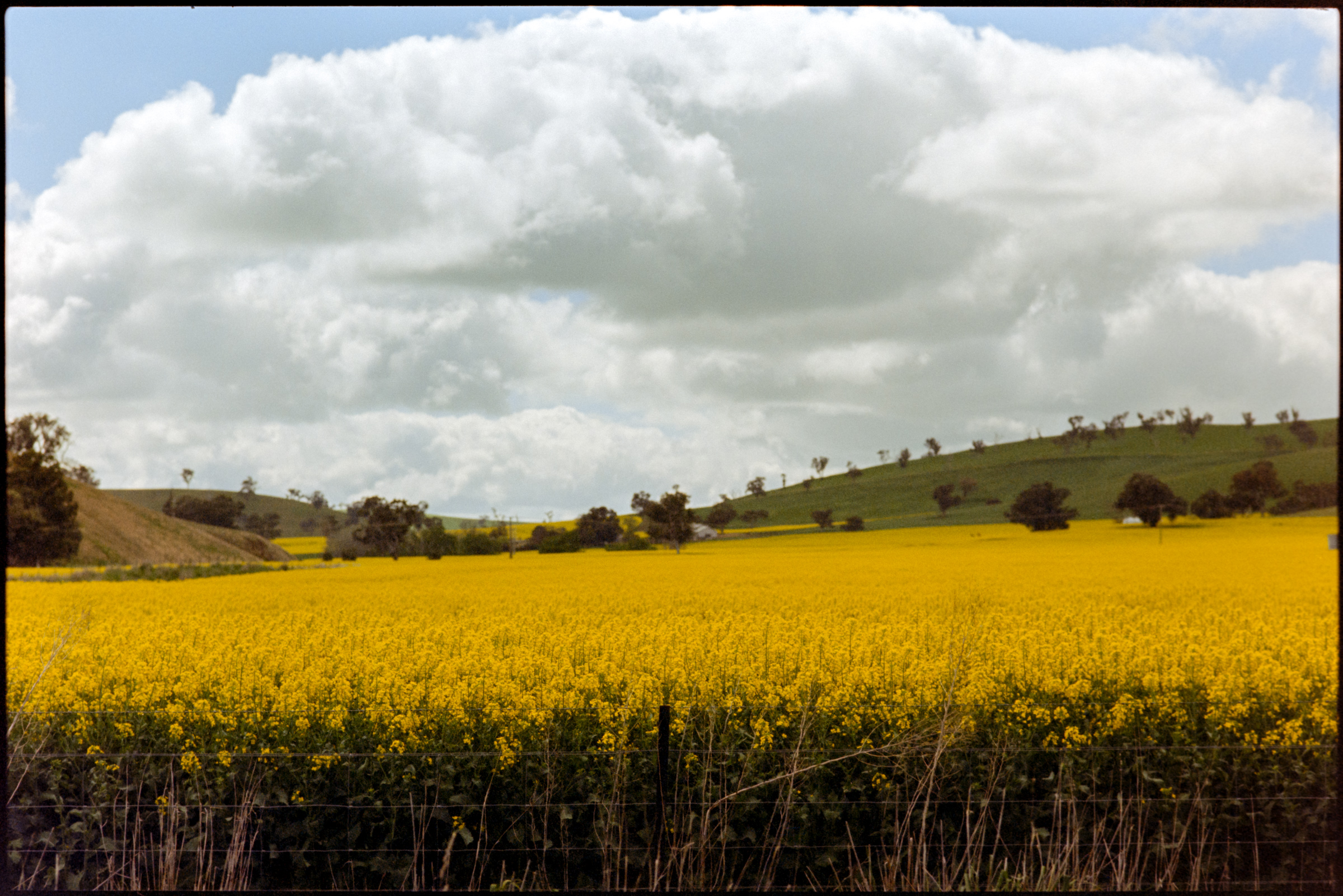
Anyway … I loaded the film, correctly, and started popping off a few shots quickly. I still wanted to shoot half a roll at ISO320 for C-41, cut the film and shoot the rest at ISO250 for ECN-2. And at least there was some yellow around too.
Back to school?
I decided to stop back back the school hall (maybe) I drove past last time. Google Maps has it marked as ‘Cullinga Hall/School?‘
This time I walked up to it to have a closer look.
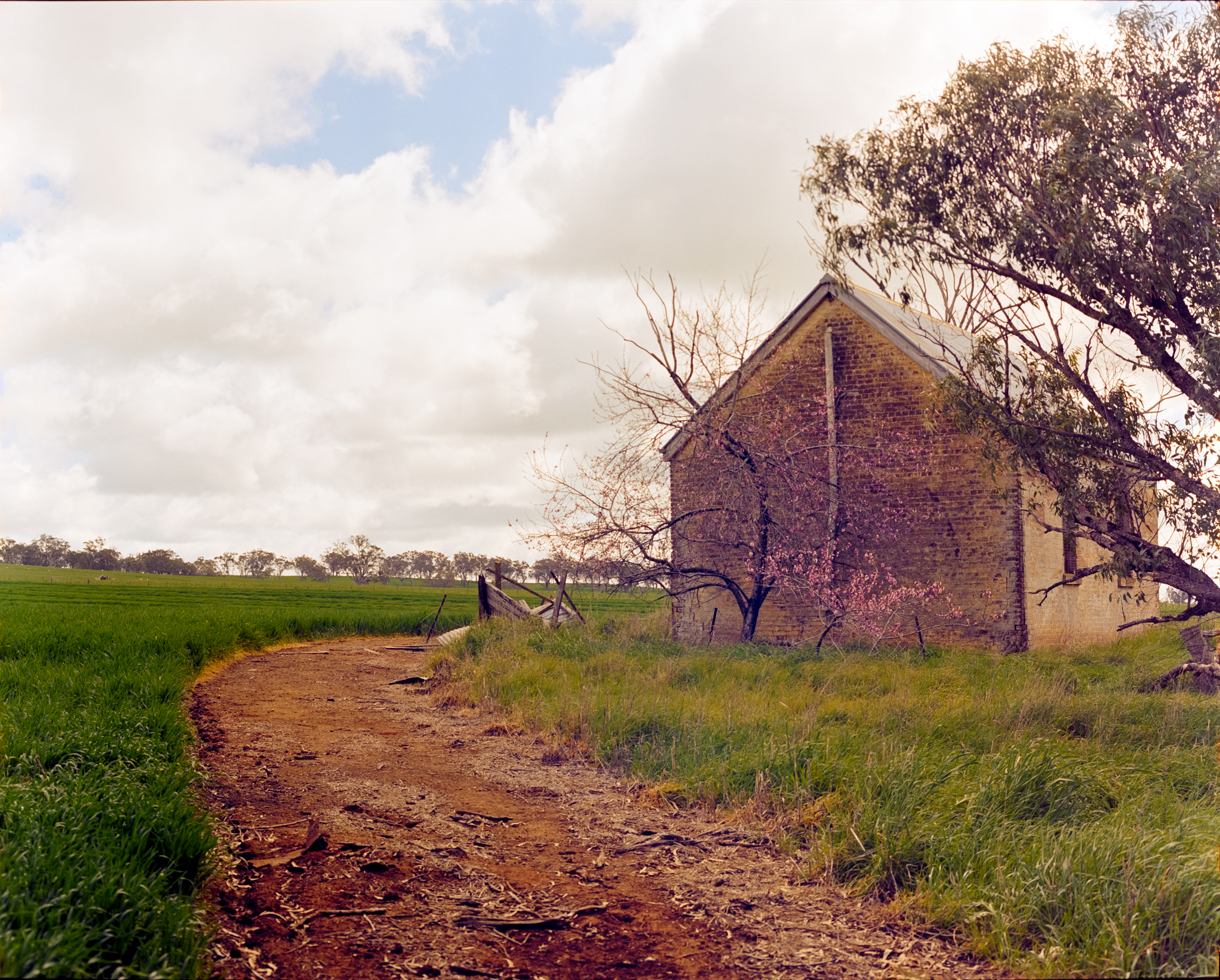
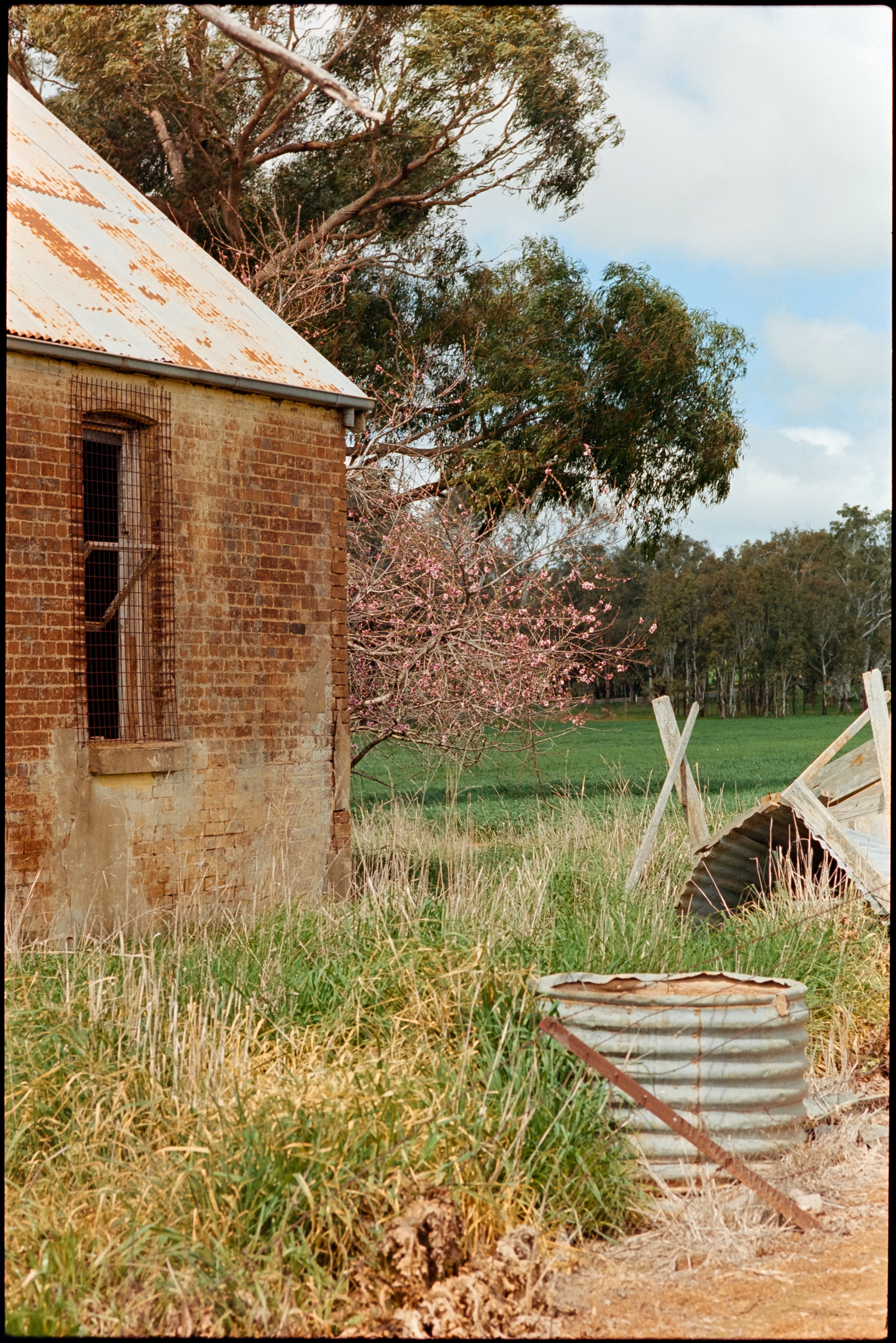
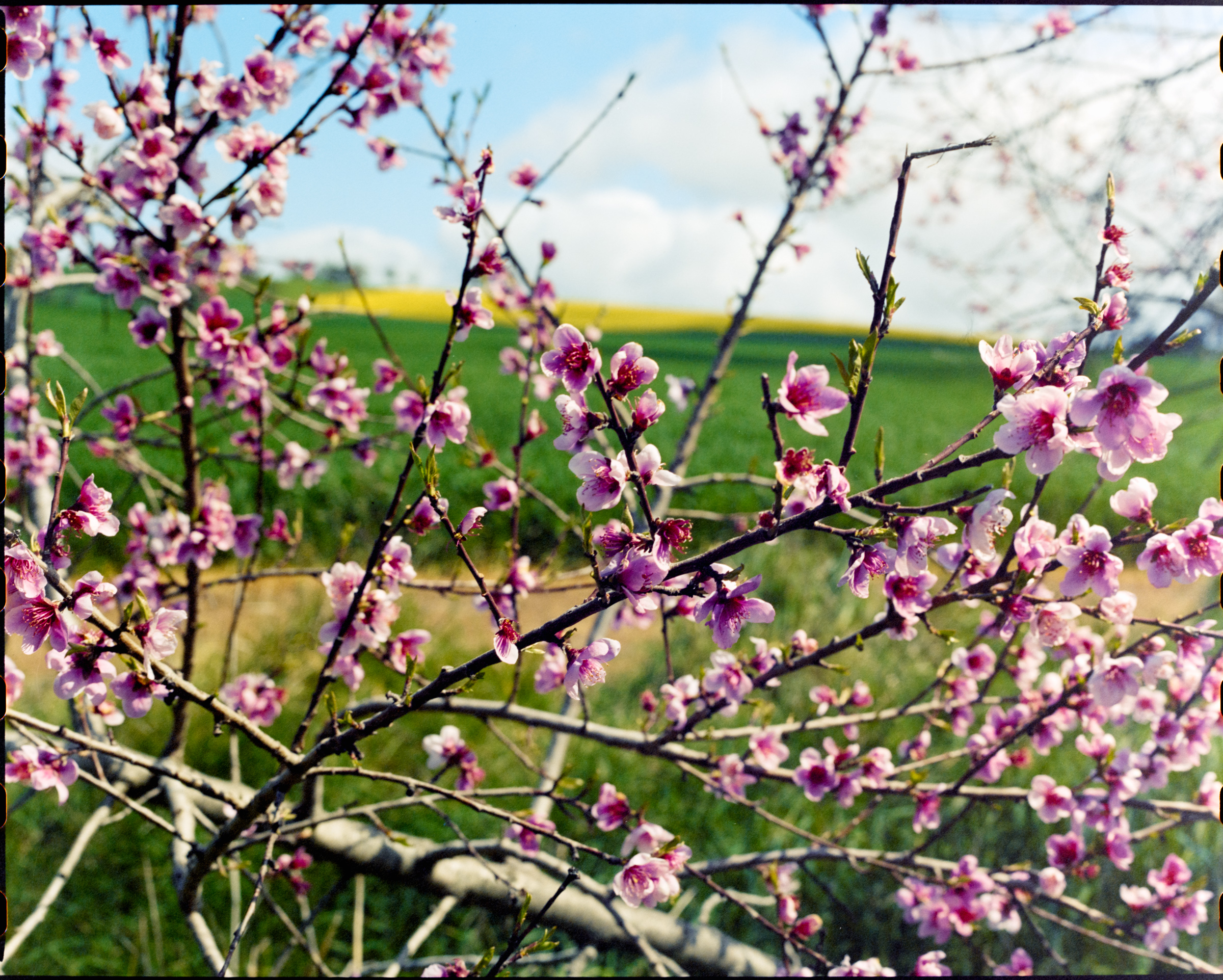
The Bronica ETRS and the standard 75mm lens are not ideal for macro work at all, but I do like the image of blossums with the field behind.
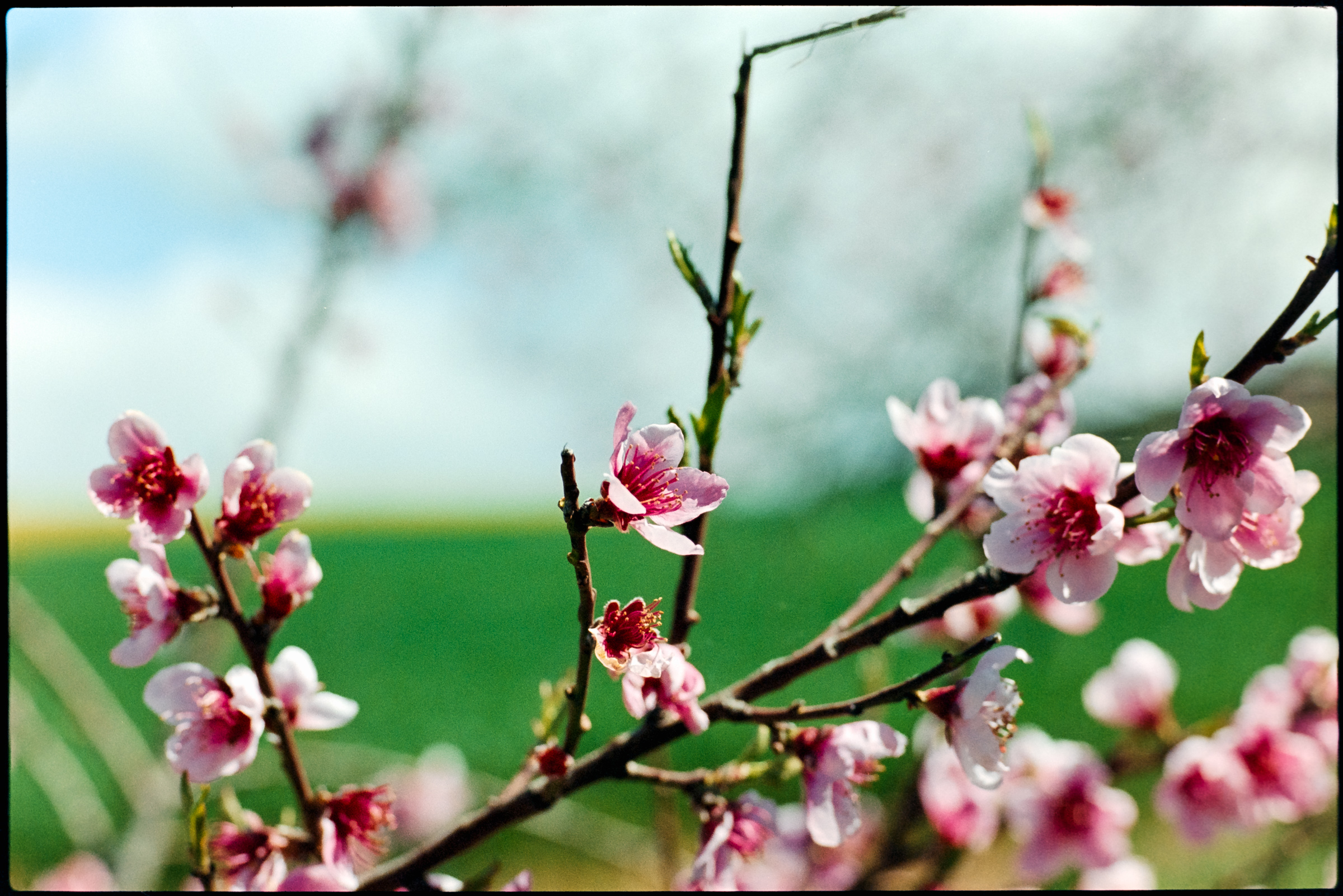
The Pentax with the 77mm can focus a little closer, and is a little easier to handle.
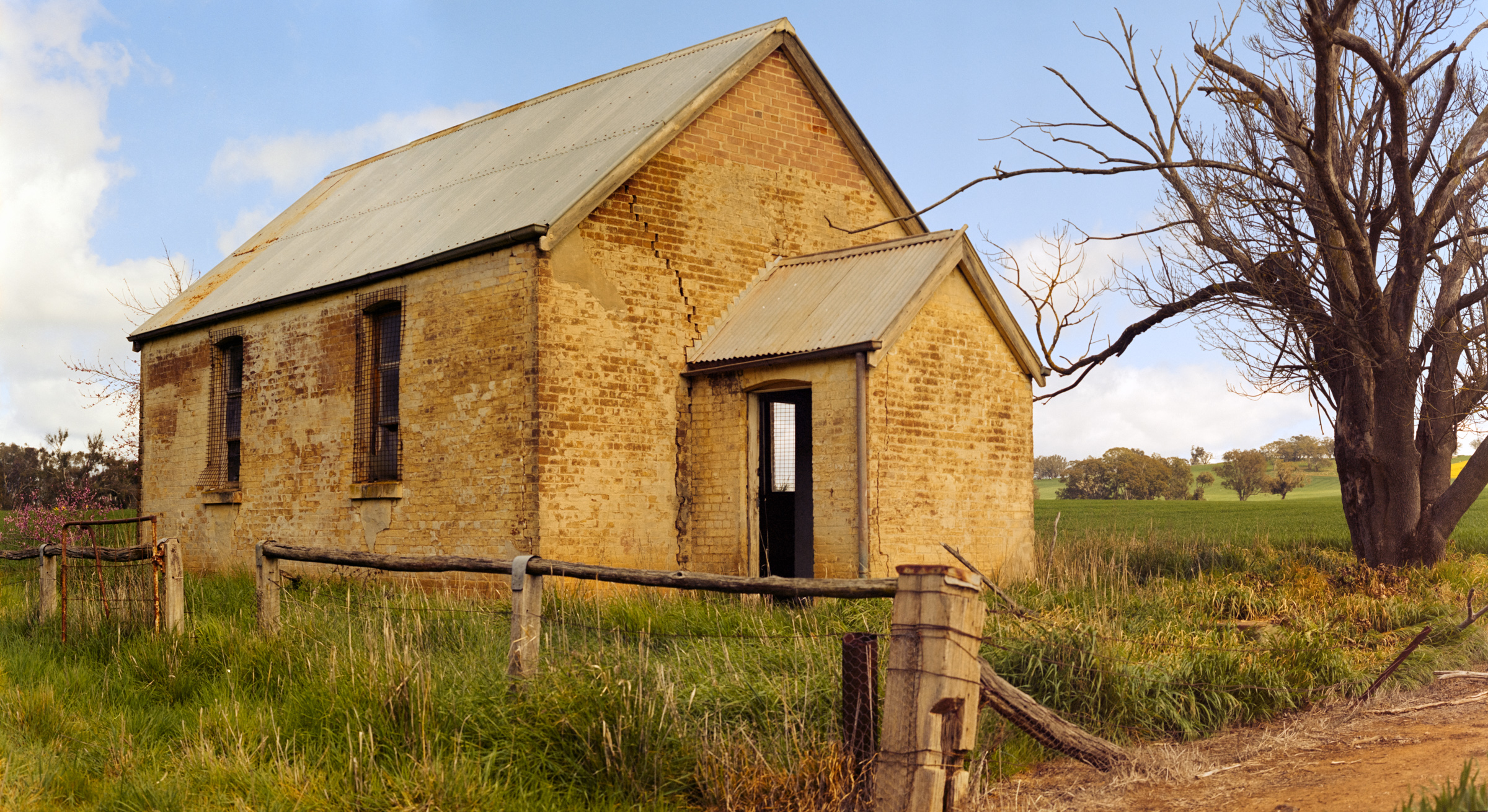
Fun fact, this is actually a stitch of two images from the Bronica. I couldn’t get back far enough to frame both the building and the tree, and couldn’t chose between the two crops.
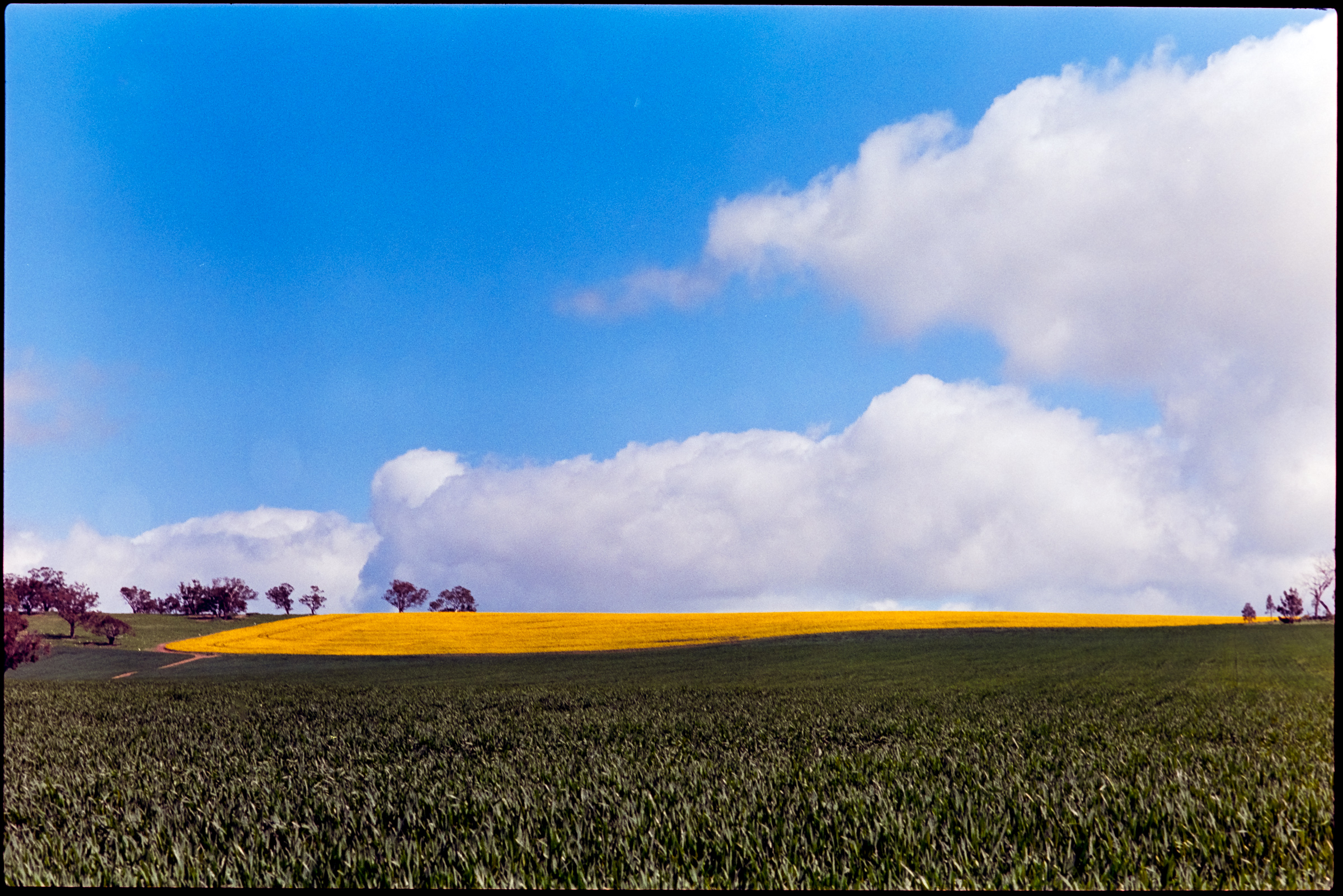
Just a little way down the road I stopped at the service station for a snack before heading off towards Murrumburrah and Harden. I always forget the two “towns” are right next to each other.

When I parked in Murrumburrah I saw some banners up advertising the Harden-Murrumburrah Camera Club. Today just happened to be their 2025 Photographic Exhibition and Competition. For the donation of a gold coin I had a nice wander around and voted for the peoples choice award. There were a lot of great photos across all of the categories.
Yellow

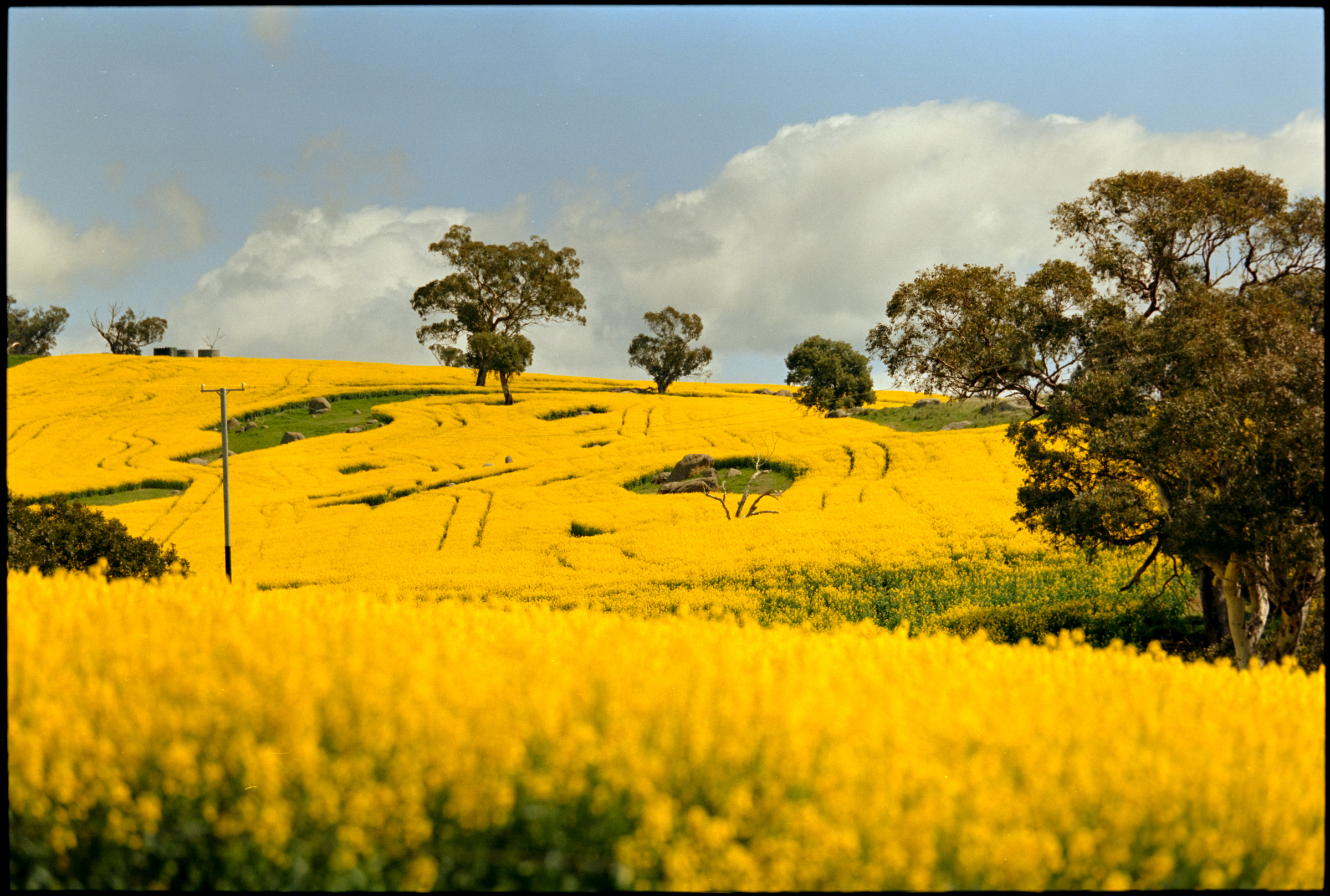
I wasn’t far outside of Harden before I started to find some proper yellow fields.
I set the Pentax Z-1 with the 70-200 on the monopod and wobbled back and forth trying to get images in focus. The autofocus in the Z-1 can’t operate the motos in the lens, but the sensor would beep and show a focus indicator in the viewfinder, maybe.
I also took a couple of test photos on the Reflex Lab 320D, this time metered for ISO250 to be processed in ECN-2 chemicals.
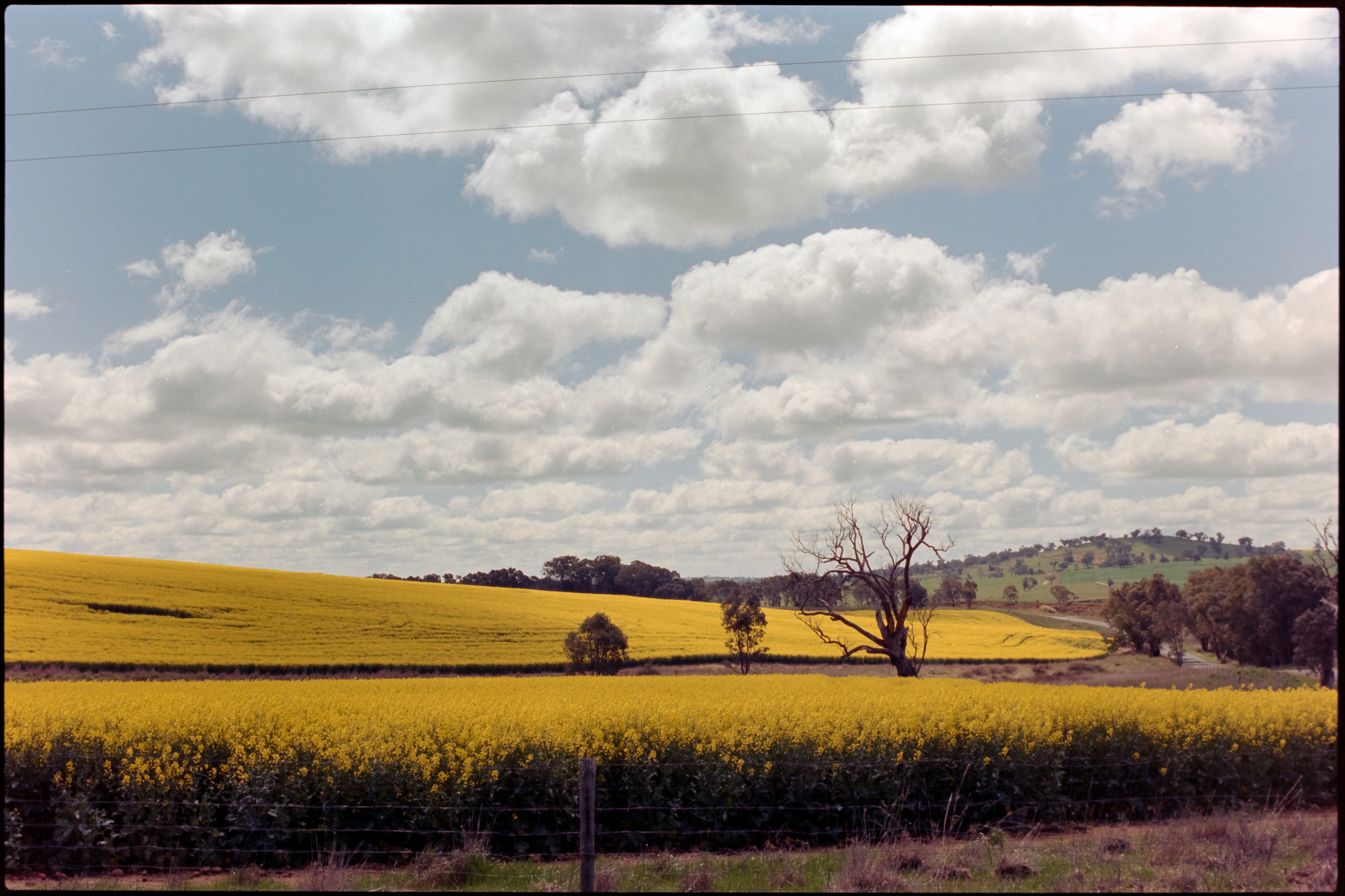
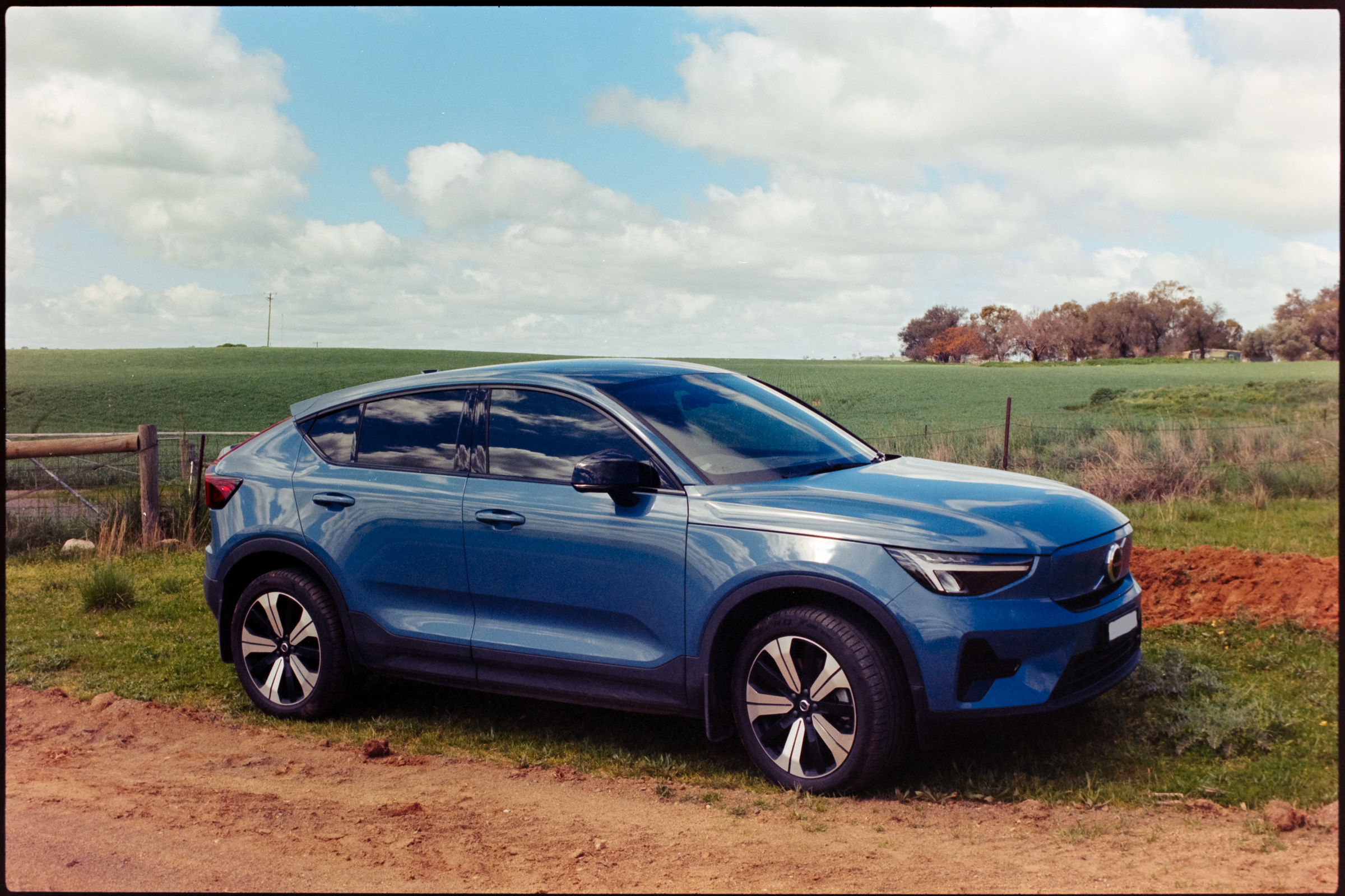
Compared with exposing at ISO320 and processing in the standard C-41 chemicals, it is a little more muted. Maybe the grain is a little more subtle, but it is hard to tell.
I set off again heading a bit further north along the same roads I usually go and managed to find a spot to pull over.



A bit further down the road I found another field, this time with what I think used to be a windmill.


Further down the road I found some sheep hanging out in a field
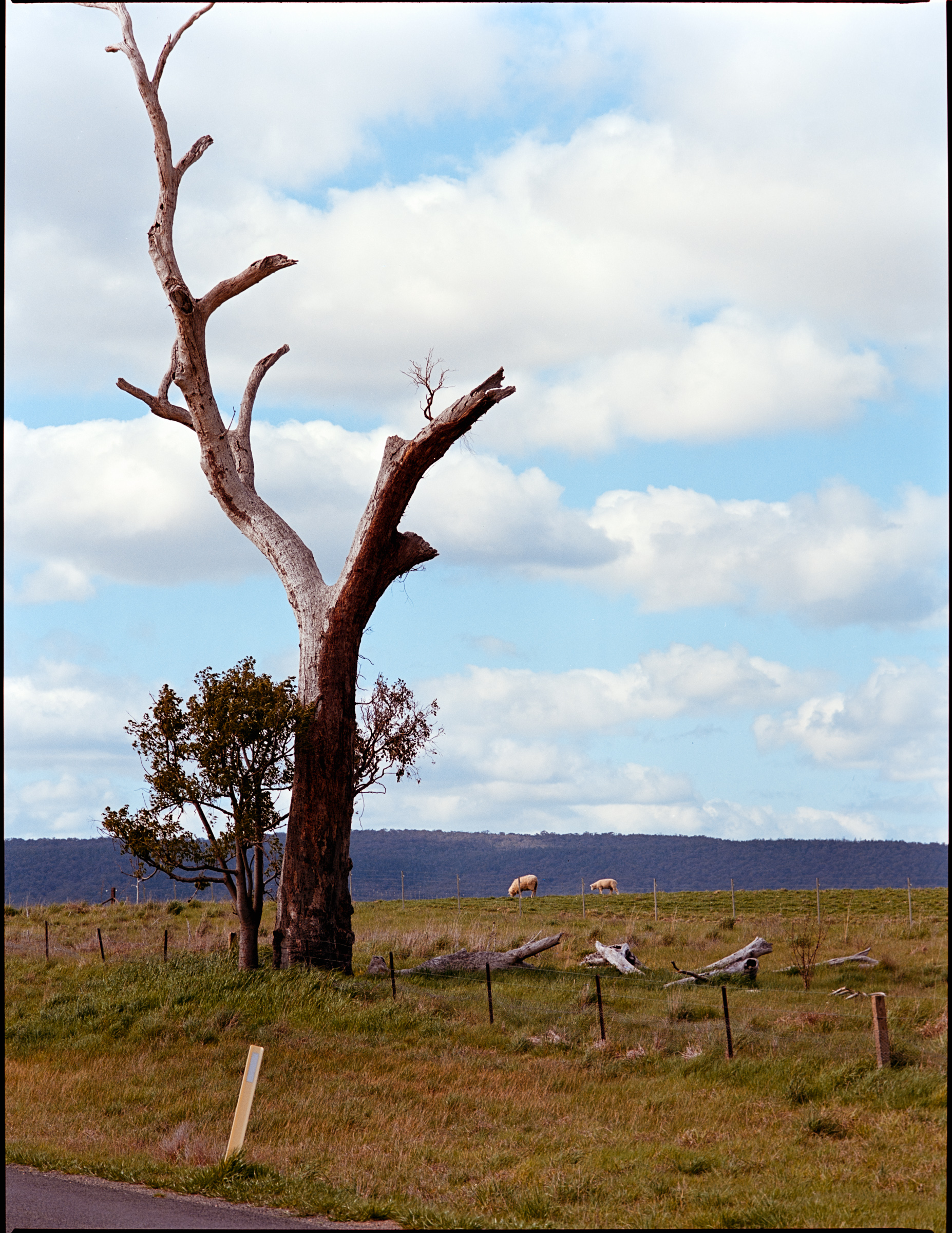
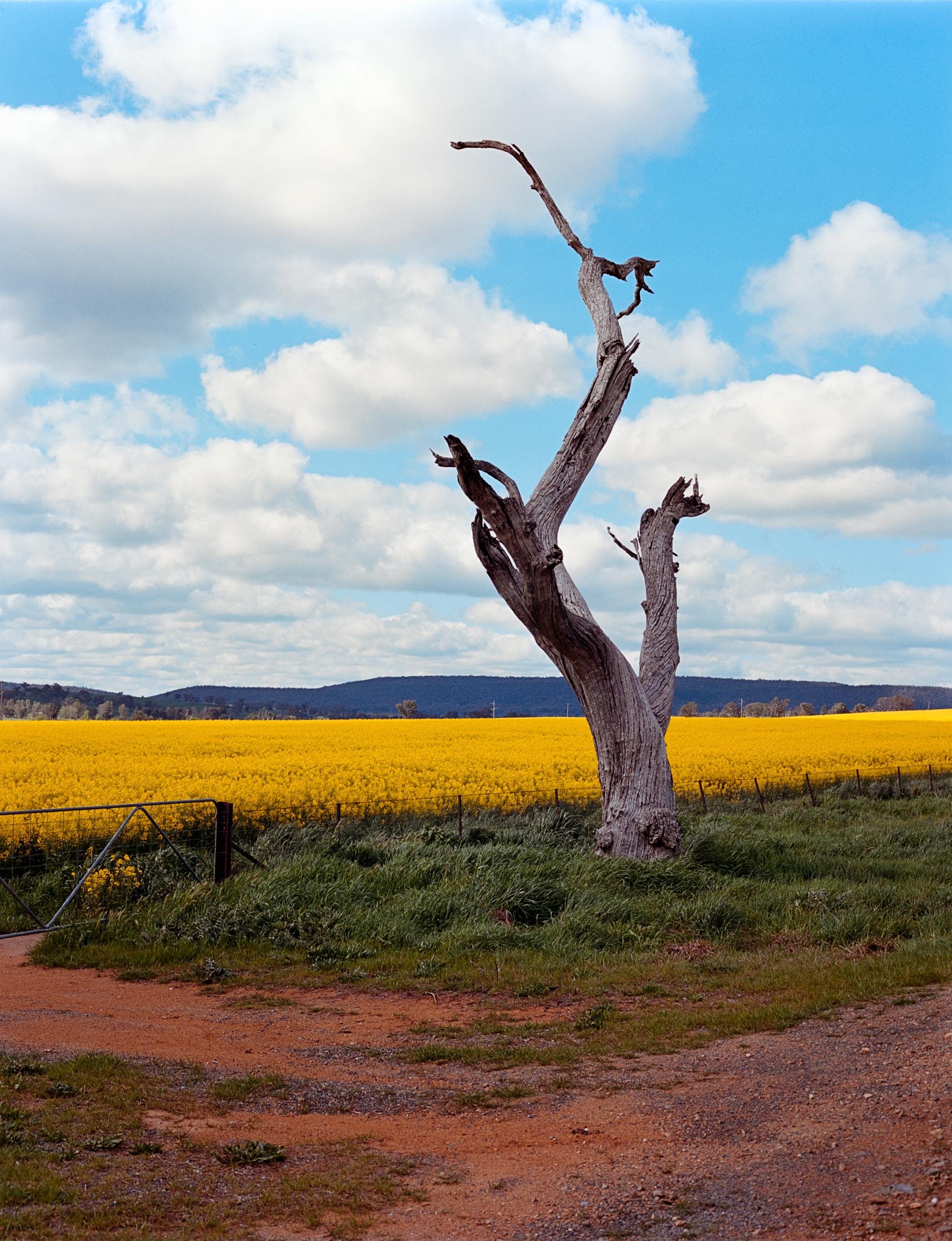


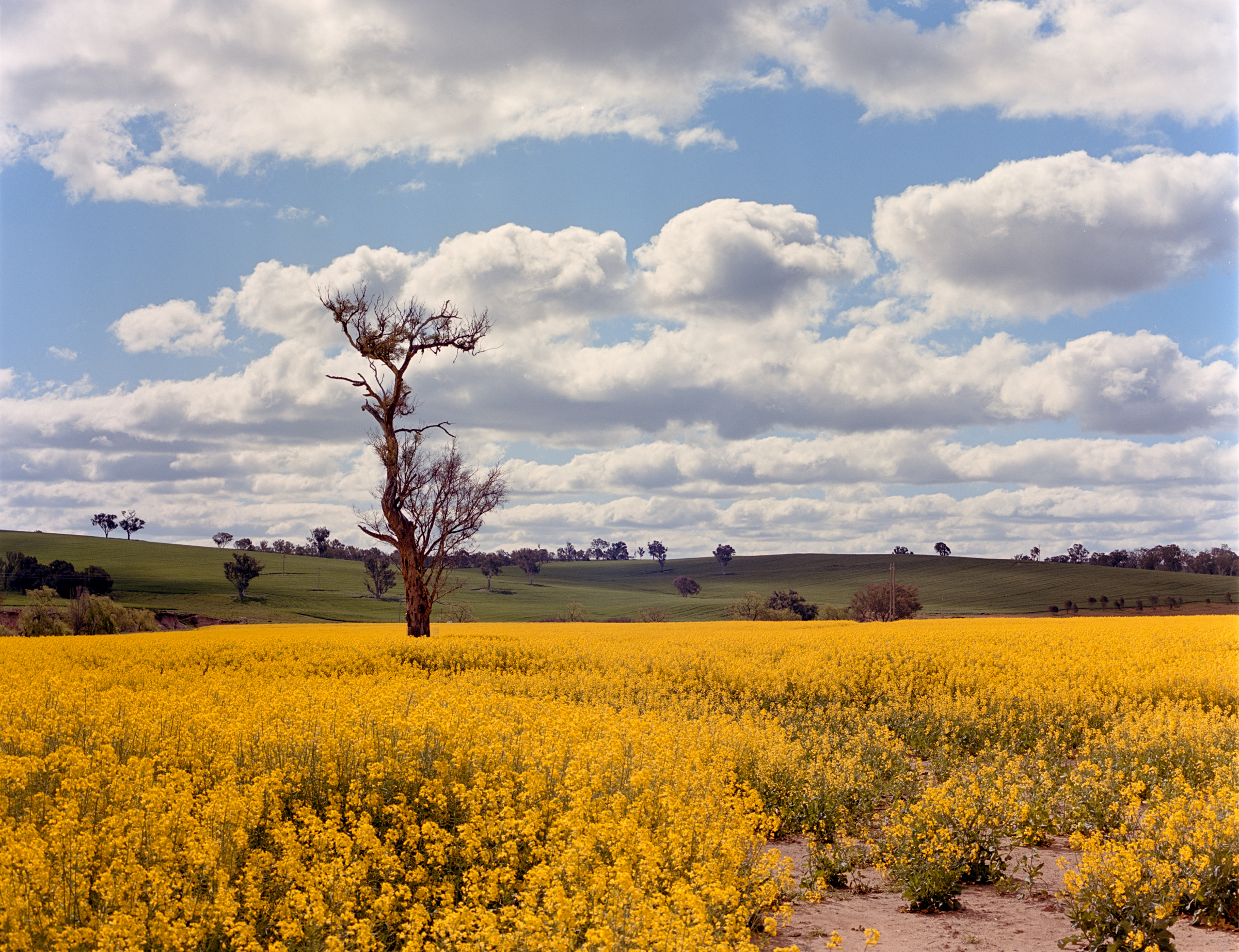
I ended up hanging out here for quite a while, waiting for the light. I don’t usually wait for the light, but I did this time. The sun kept popping in and out of the clouds and the shadows were moving quickly across the fields. It was changing how everything looked, but also meant that with the fixed ISO of the film the required shutter speed for the right exposure was going up and down, and shooting ISO 250 film on a long telephoto lens wasn’t the brightest idea I’ve had.
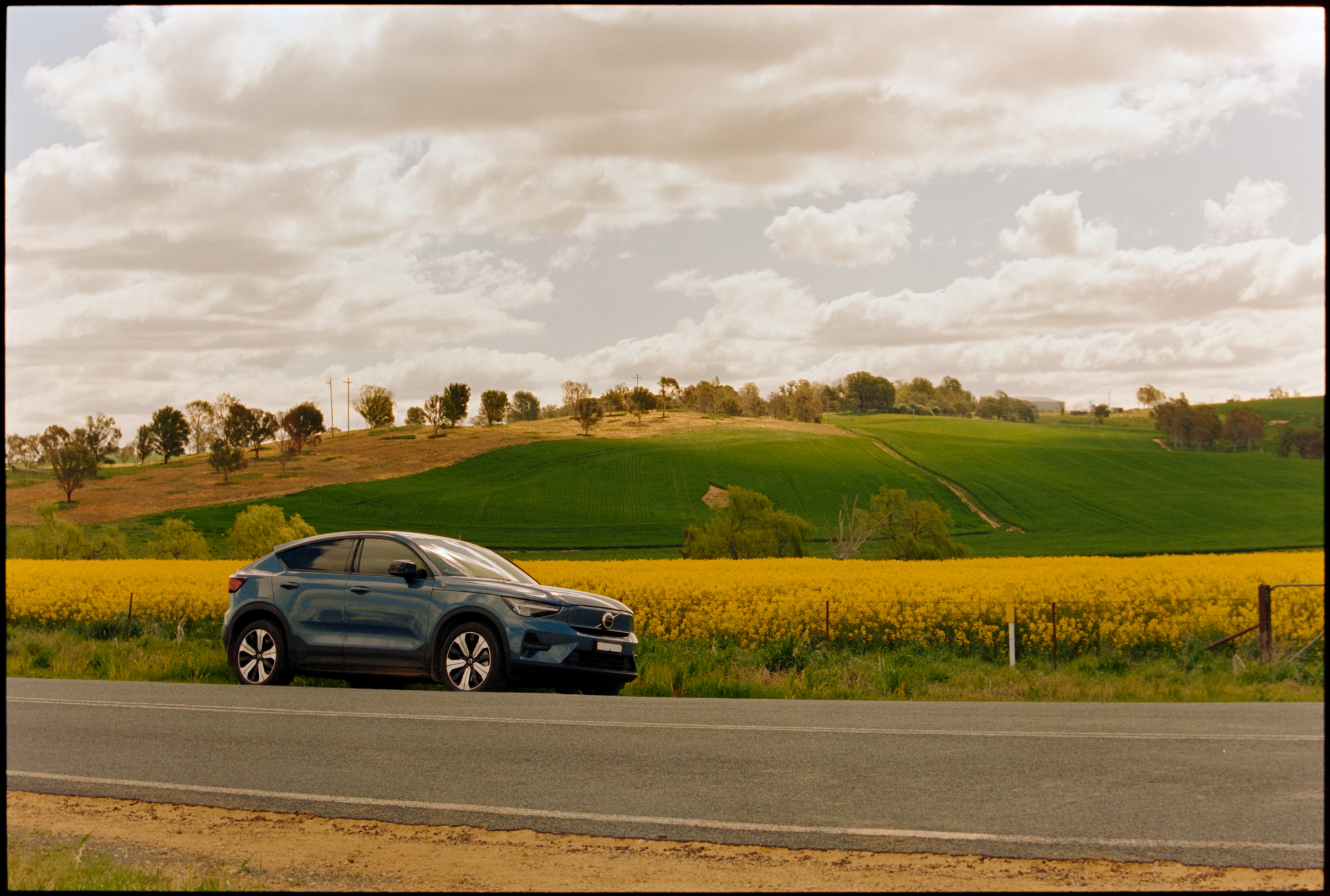
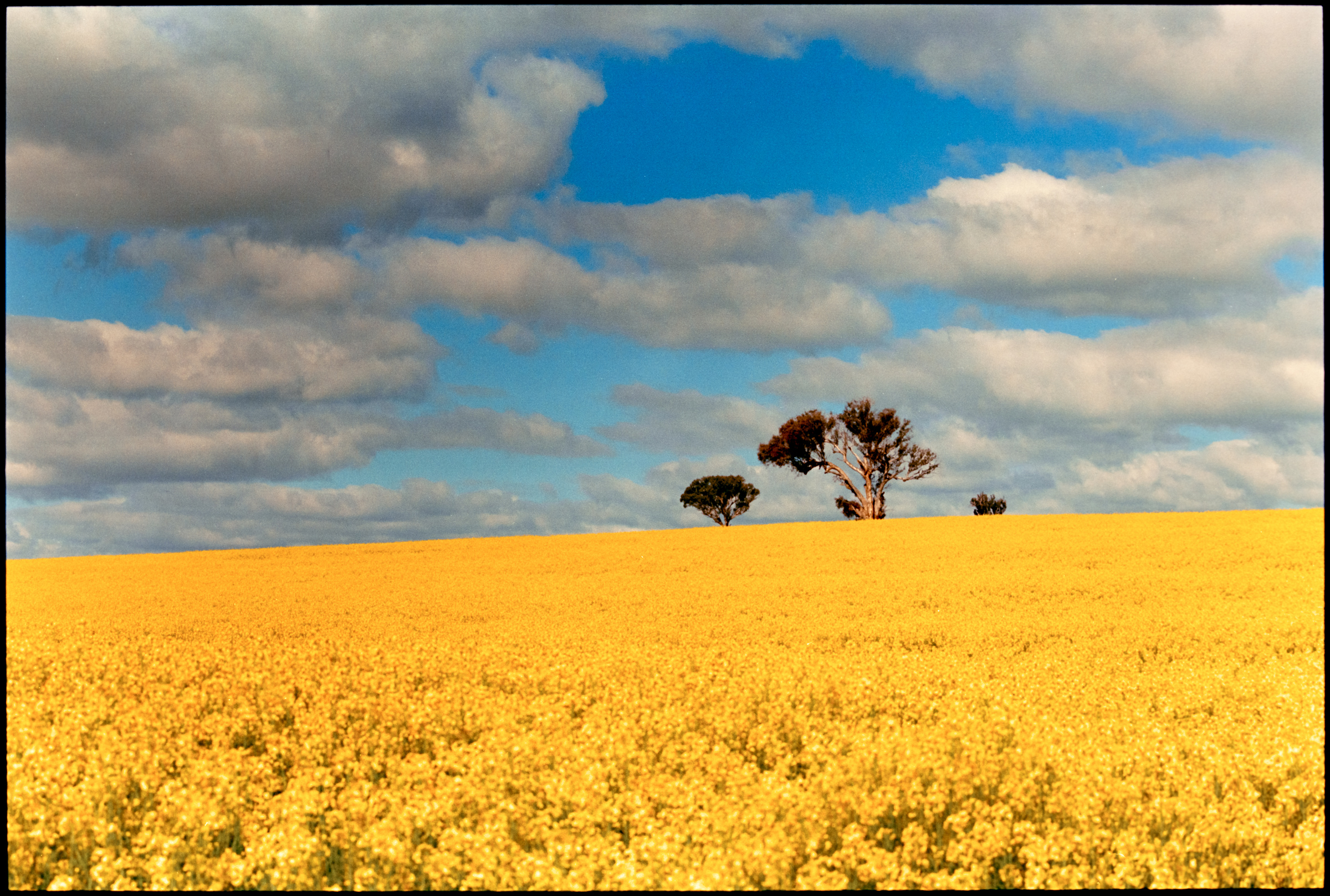
Driving on I spotted what was a long disused stretch of railway running along side the road, and what looked to be a very old bridge. There was a bit of old road that went nowhere so it was easy to pull off and park the car. I wandered down to see if I could get a photo. It was harder to get a good view of it than I was hoping, and the sun was not in a nice spot. I could see some fields behind it, but they disappeared too easily, and the mud was distracting. I cropped the 645 image down to 3:2, I think it might have helped, a little.
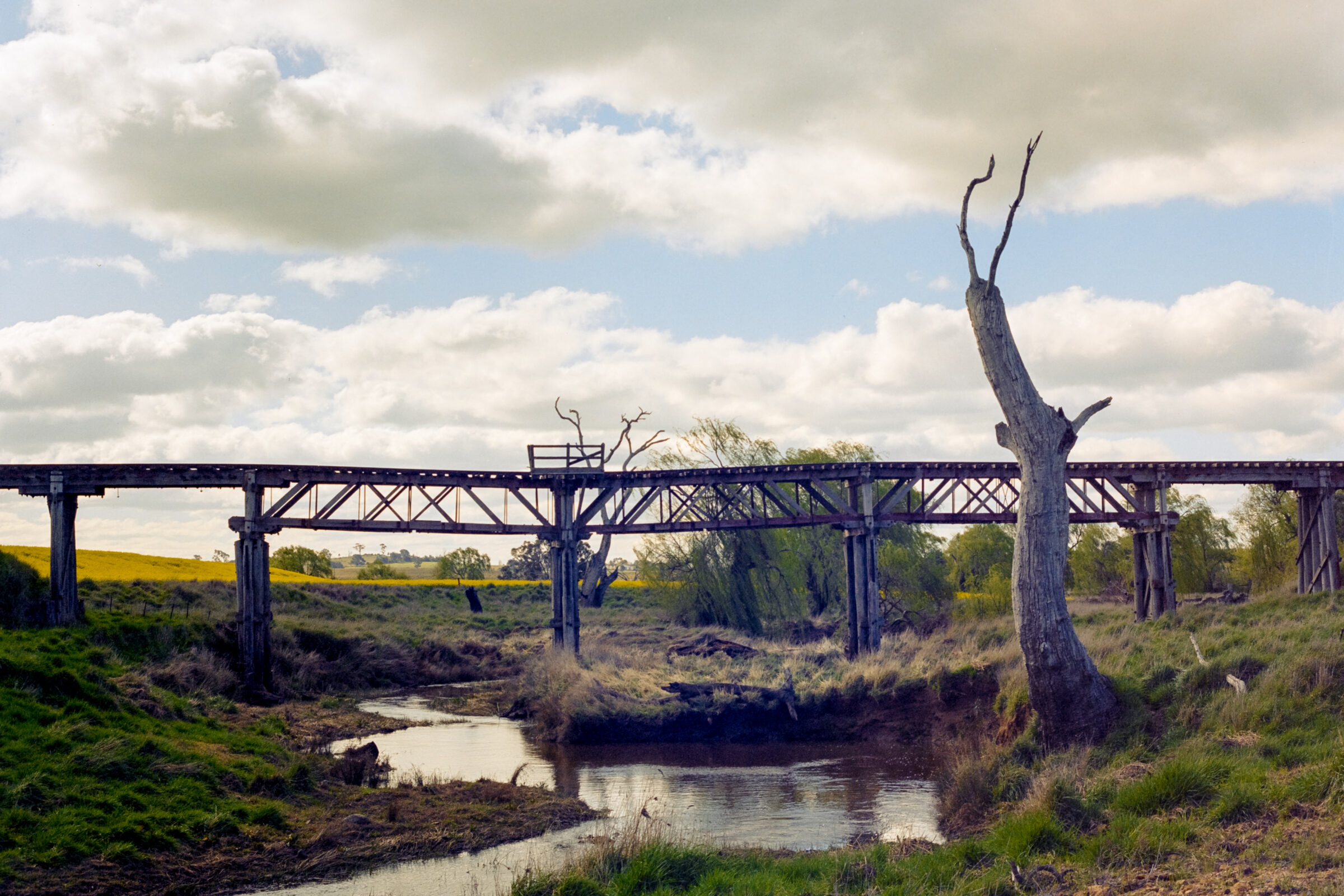
Second Last Stop

I have driven past this tiny little church a few times, and even stopped once – that roll of film is last roll of film I paid someone else to develop (not counting the two rolls in New Zealand, but that seems different). It might have made its way into blog post sometime, but maybe not.
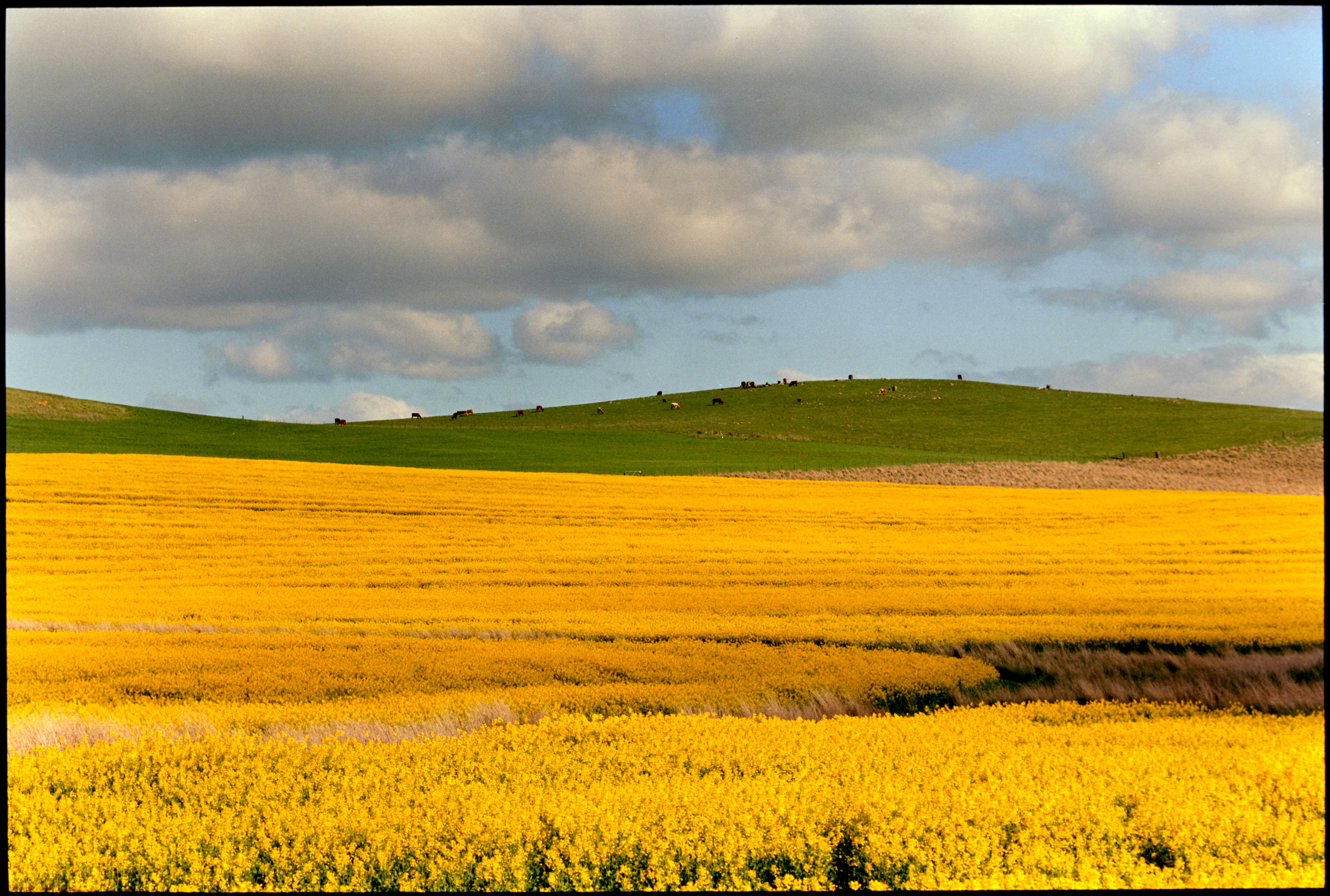
There was a wonderful view of a field, and I spent a while here taking photos with several cameras, including my DSLR.

Birds
I packed everything back into the car and figured that might have been it for the day. But, only a few minutes down the road and long before I’d reach the Hume I could see some birds circling overhead, big birds.
I managed to find a spot (a driveway) to pull off the to the side, and stood behind the car staring straight up.

I think of the 168 digital photos from the day, 140 of them were taken in the next 3 minutes.
What did I learn?
Well, I learnt that these two rolls of 250D (the 120 medium format in the Bronica and the 35mm in the Pentax Z-1) should have been the absolute last roll of film I processed in those chemicals, a roll of Phoenix II I processed in ECN-2 later one did not fare well.
I still love the colours I can get from 250D, but the processing is fiddly. No matter how well I clean off the remjet layer there always seems to be something left behind when I going through my scans, and I’ll spend ages in Lightroom cleaning up spots.
Re-spooled film.
It is the only way to get some of the cine-based films, like the 250D. I can’t afford to constantly shoot Cinestill 400D (I have a single roll in the fridge). It is really the only way to get AeroColor IV, which I absolutely love. But, the quality can vary wildly (which is why I assume Cinestill get away with charging what they do). There are often marks on the negatives from either my efforts to remove the remjet after shooting, or from when it was spooled into a 35mm cassette.
The ‘re-spooled’ 120 film is a little different, bit it is still possible to damage the film in the process of cutting it down from the 65mm cinema rolls and attaching it to the backing paper. And cleaning the remjet off the 120 film can be a little bit of a task.
Maybe I won’t invest in much 250D film stock anymore? I mean, ISO250 is also not that fast when shooting with longer lenses, maybe time for some more UltraMax? I was looking at the photos I took when driving back from Melbourne after easter, and the UltraMax turned out great. Better than I would have thought.
Maybe if I can get my hands on more of the Reflex Lab 320D AHU I should shoot that more, that is not immune to damage when being respooled, but without the remjet layer to be removed there is a much smaller chance of damage. My (entirely unscientific) test didn’t show a massive difference between ECN-2 and C-41 processing for that film.
I also struggled a bit with colours on the 250D in the Bronica. I don’t know if it was the scans or the processing, it was just more work that I was expecting. The AeroColor IV looked amazing straight away with barely any adjustments. Maybe the clear based helps? Maybe I need to adjust the light I use when scanning? Either way, user error I expect.
Medium Format
I really enjoy using the Bronica ETRS. The meter in the prism is excellent and I can basically trust it to have perfect exposure every time – though I am not willing to commit to using ‘auto’ and will insist on setting the shutter speed myself. Since this trip I have taken some more photos with it and I really like them too.
Scanning medium film can also be annoying and fiddly. I’ve tried so many things, multiple cameras. I have also popped down to photo access and used their Epson flatbed scanners. I will say the colours I got straight out the Epson were much better than what I get from my DSLR / mirrorless scans – scanned as positive and converted with NLP. But the resolution and dust on the scans didn’t work out. I think that was operator error.
I cannot afford to invest in a flatbed scanner. Epson have discontinued them and they have shot up in price on the second hand network. Maybe next time I prepare the negatives for the scanner and try that again, and don’t use the automatic dust removal which I was later very reliably informed can really stuff up the scans 😅
Now I’ve finished September go-for-a-drive photos I can get back to processing the stuff from New Zealand.
